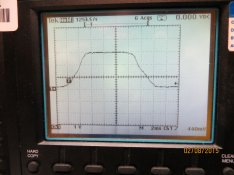bergytone
Member
Hello all,
I know what you're thinking... not another thread about Shutter speed testing. What I'm working on is I'd like to make a handheld shutter tester, similar to the Calumet tester, but maybe a little more up to date and higher tech with an LCD screen. If all goes well, I would like to package it up for sale to the masses. I have lots of experience building electronic items to sell outright, so I'm not afraid to put this together.
I looked through the posts on shutter speed testing, and there seems to be a couple prominent testing methods out there. One uses a video monitor to capture video frames and the other is the popular phototransistor plugged into Audacity. My post is not to debate which of these methods work better, but to share some of my observations on the bench regarding optically measuring shutters.
I have lots of data, and I don't want this to be the longest post in history, so I'll break it into pieces. First, I'll describe the setup. First I built up a receiver with a very accurate photodiode/ amplifier part offered by TI. To verify the speed of the receiver, I also built an LED driver with variable duty cycle (on time) so I could test my detector's speed accuracy.

You can see the LED hovering over the detector in the lower right corner of the board. I set the LED to pulse at 1ms, which is 1/1000 sec. Here is an oscilloscope plot of the signals going in and coming out:

Explanation: the upper waveform shows the voltage driving the LED (light source) and the lower waveform shows the output of the detector. If you're not a techhie, I apologize, but this is how we electrically check the capability of the detector. You can see that the two waveforms are the same width, even though one is inverted. I ran a few more tests at higher speed and found that the detector follows the LED signal to within 5 microseconds, which is better than I thought it would be. It means that the detector has an error of 5/100,000 of a second. Great. I found out also that if the detector is blasted with a lot of light and it 'saturates'. the error grows to over 20 microseconds, but if the device is kept within its 'linear region.
So onward to trying to test a shutter speed.
I set up my light source (an LED flashlight) in front of my Nikon FM and the detector right behind the shutter curtain. I set the speed to 1/125 sec and here's the waveform of the light coming through:

If you notice, the scale of the waveform is 2 milliseconds per division. 1/125 is 8 milliseconds. The width of this pulse is approximately 8 ms. If you look at the point where the waveform starts and stops, it is 9ms. If you look at the top portion of the waveform it measures a true 8 milliseconds.
The slope of the rising edge and of the falling is is pretty pronounced. It's nearly a millisecond. I feel this is probably due to the 'prenumbra' effect of the shutter. One would expect a sharp rise and fall time, but because this effect, there is a shadowing effect of light that gets around the shutter as it moves.
This effect starts to get more of an issue with higher shutter speeds. Here's a plot of a 1/500th shutter setting on the Nikon. I took the lens off to see if it made any difference, and it didn't:

1/500 sec should measure out to 2 milliseconds. Looking at the waveform, note that the scale is now 500 microseconds per division. The measurement at the lowest part of waveform is 4 milliseconds wide, and about 1 1/2 millseconds wide at the top. So my question is....
how would interpret this speed and display it on a shutter tester LCD?
It even gets harder to quantify at the 1/1000 setting. At this point I'm going to open it up for discussion. I have a bunch of other waveforms to post, but as I said I don't want this to be the longest post in history. Some of the old leaf shutter cameras I tested had extremely long rise and fall times. I thought of posting this in the DIY/ electronics group, but groups don't seem to get the coverage that general posts do.
I know what you're thinking... not another thread about Shutter speed testing. What I'm working on is I'd like to make a handheld shutter tester, similar to the Calumet tester, but maybe a little more up to date and higher tech with an LCD screen. If all goes well, I would like to package it up for sale to the masses. I have lots of experience building electronic items to sell outright, so I'm not afraid to put this together.
I looked through the posts on shutter speed testing, and there seems to be a couple prominent testing methods out there. One uses a video monitor to capture video frames and the other is the popular phototransistor plugged into Audacity. My post is not to debate which of these methods work better, but to share some of my observations on the bench regarding optically measuring shutters.
I have lots of data, and I don't want this to be the longest post in history, so I'll break it into pieces. First, I'll describe the setup. First I built up a receiver with a very accurate photodiode/ amplifier part offered by TI. To verify the speed of the receiver, I also built an LED driver with variable duty cycle (on time) so I could test my detector's speed accuracy.
You can see the LED hovering over the detector in the lower right corner of the board. I set the LED to pulse at 1ms, which is 1/1000 sec. Here is an oscilloscope plot of the signals going in and coming out:
Explanation: the upper waveform shows the voltage driving the LED (light source) and the lower waveform shows the output of the detector. If you're not a techhie, I apologize, but this is how we electrically check the capability of the detector. You can see that the two waveforms are the same width, even though one is inverted. I ran a few more tests at higher speed and found that the detector follows the LED signal to within 5 microseconds, which is better than I thought it would be. It means that the detector has an error of 5/100,000 of a second. Great. I found out also that if the detector is blasted with a lot of light and it 'saturates'. the error grows to over 20 microseconds, but if the device is kept within its 'linear region.
So onward to trying to test a shutter speed.
I set up my light source (an LED flashlight) in front of my Nikon FM and the detector right behind the shutter curtain. I set the speed to 1/125 sec and here's the waveform of the light coming through:
If you notice, the scale of the waveform is 2 milliseconds per division. 1/125 is 8 milliseconds. The width of this pulse is approximately 8 ms. If you look at the point where the waveform starts and stops, it is 9ms. If you look at the top portion of the waveform it measures a true 8 milliseconds.
The slope of the rising edge and of the falling is is pretty pronounced. It's nearly a millisecond. I feel this is probably due to the 'prenumbra' effect of the shutter. One would expect a sharp rise and fall time, but because this effect, there is a shadowing effect of light that gets around the shutter as it moves.
This effect starts to get more of an issue with higher shutter speeds. Here's a plot of a 1/500th shutter setting on the Nikon. I took the lens off to see if it made any difference, and it didn't:
1/500 sec should measure out to 2 milliseconds. Looking at the waveform, note that the scale is now 500 microseconds per division. The measurement at the lowest part of waveform is 4 milliseconds wide, and about 1 1/2 millseconds wide at the top. So my question is....
how would interpret this speed and display it on a shutter tester LCD?
It even gets harder to quantify at the 1/1000 setting. At this point I'm going to open it up for discussion. I have a bunch of other waveforms to post, but as I said I don't want this to be the longest post in history. Some of the old leaf shutter cameras I tested had extremely long rise and fall times. I thought of posting this in the DIY/ electronics group, but groups don't seem to get the coverage that general posts do.


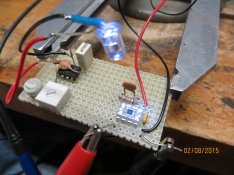
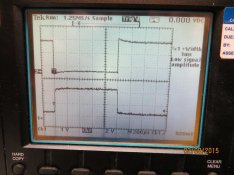
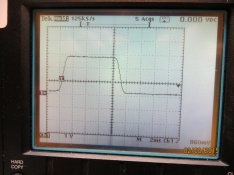





 The main problem might be identifying or finding enough info on some of the semiconductors to find them or their equivalents. Some commercially made stuff used custom marked parts just to frustrate reverse engineering by the competition. Of course it may well be once a schematic is in hand the design will be obvious enough to do any minor "re-engineering" as needed.
The main problem might be identifying or finding enough info on some of the semiconductors to find them or their equivalents. Some commercially made stuff used custom marked parts just to frustrate reverse engineering by the competition. Of course it may well be once a schematic is in hand the design will be obvious enough to do any minor "re-engineering" as needed.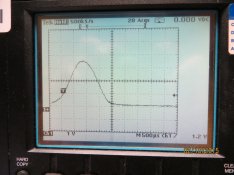
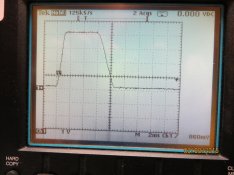
 )
)
